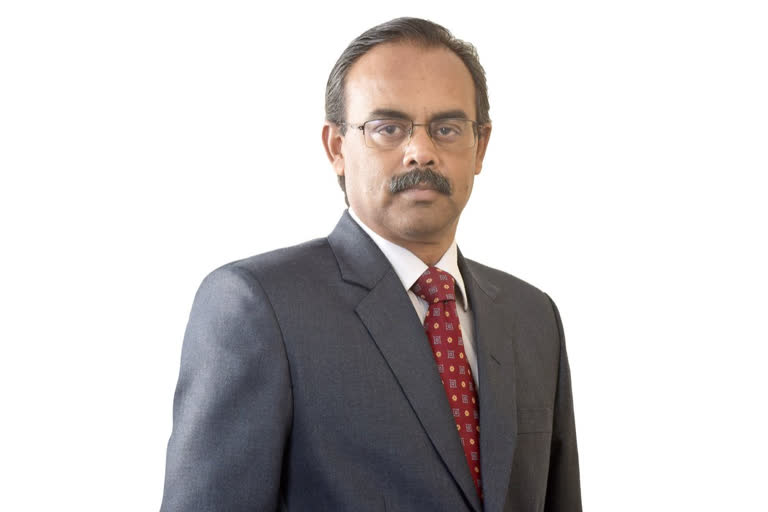New Delhi: A top economist has questioned the government’s emphasis on the supply side to revive the country’s economy which was articulated in the economic survey tabled by the finance minister Nirmala Sitharaman in Parliament on Monday. Sunil Sinha, Principal Economist at India Ratings and Research, said India’s emphasis on supply-side reforms rather than a total reliance on-demand management was somewhat misplaced.
“Supply is only one side of the economy and can sustain only if there is an equal level of support coming from the demand side of the economy,” Sinha said.
Sinha, who closely tracks macro-economic issues, highlights that the Indian economy was slowing down even before the Covid-19 related lockdowns as it has been suffering from the demand side.
Elaborating on the state of the Indian economy which was in a slowdown even before the Covid-19 pandemic struck the world in early 2020, Sinha says, of the four demand drivers, except government final consumption expenditure, three demand drivers - private final consumption expenditure (PFCE), gross fixed capital formation and net exports were already floundering.
Sluggish private consumption
Citing the data from the country’s apex statistical body, National Statistical Organisation (NSO), the economist said NSO’s advanced estimate showed that the private final consumption expenditure, which is the largest component of GDP (58.6%), is expected to grow by 6.9% year-on-year in the current financial year.
The weak growth was despite a low base and the sales data of many consumer durables showing robust growth. “In fact, FY22 PFCE is 2.9% lower than FY20 PFCE. It suggests that the consumption demand was still weak and not broad-based,” Sinha noted. “The government consumption demand alone, with a share of just 12.5% in GDP, will not be sufficient to revive the demand.”
Sinha said despite the weak growth in the private final consumption expenditure, not much was discussed in the economic survey, except that the government expenditure on safety nets would continue to cushion the vulnerable sections of the society.
He, however, supported an increase in the capital expenditure by the government.
Increasing capital expenditure
In three years, the Union Government’s capital expenditure has gone up from over Rs 3.35 lakh crore in FY 2019-20 to Rs 4.39 lakh crore in FY 2020-20 (revised estimates) and the finance minister allocated over Rs 5.54 lakh crore for capital expenditure for the current fiscal as per the budget estimates.
Sinha says the government’s CAPEX on infrastructure will have a multiplier effect but it will play out only in the medium to long term.
“Given the pandemic and its impact on life, livelihoods, and household behavior, there is an urgent need to not only put more money in the hands of households but also create employment opportunities in the short run,” Sinha advised the government.
He says it can happen through a focus on infrastructure where the gestation time is short and projects are employment-intensive, adding that the Economic Survey does not talk about it but hopefully something will be done in the Union budget.
Rural Employment Scheme scaled down
After the outbreak of the Covid-19 global pandemic, several state finance ministers and economists urged the government to expand the national rural employment guarantee program (MGNREGA) to urban areas as well.
Though the scheme was not extended to the urban centers, the government did increase the allocation for rural employment from the budget estimate of Rs 61,500 crore for FY 2020-21 to over Rs 1.11 lakh crore as per the revised estimates to provide employment to returnee migrant workers in their home towns and villages. However, for the current fiscal it was cut down to Rs 73,000 crore, a reduction of Rs 38,500 crores.
Accurate assessment of situation
Sinha also praised the economic survey for correctly identifying the areas of both strength and risk to the Indian economy.
He says safety-nets for the vulnerable sections of society and business segments, vaccination programs for the bulk of the population, various credit, and liquidity enhancing schemes, and a significant increase in the capital expenditure on infrastructure have created an environment conducive for a sustained long-term expansion of the Indian economy.
The economist says other positives identified by the Survey such as strong growth in the exports of goods and services, healthy foreign exchange reserves, a well-capitalized banking system, and a vibrant capital market would support the revival in the economy.
He says India Ratings and Research concurs with the view articulated in the Survey that new waves of the Covid-19 pandemic, likely liquidity withdrawal by major central banks across globe high global commodity prices pose a risk to the Indian economy.



